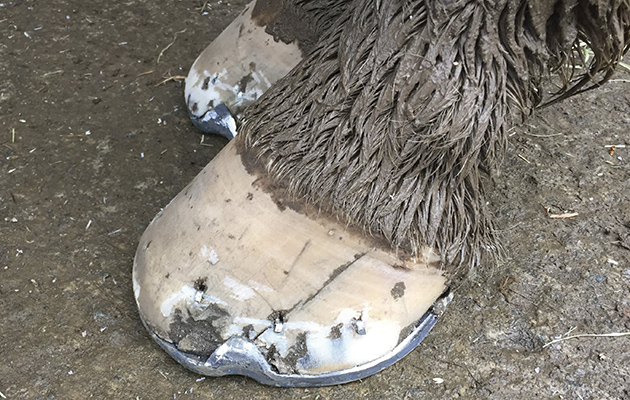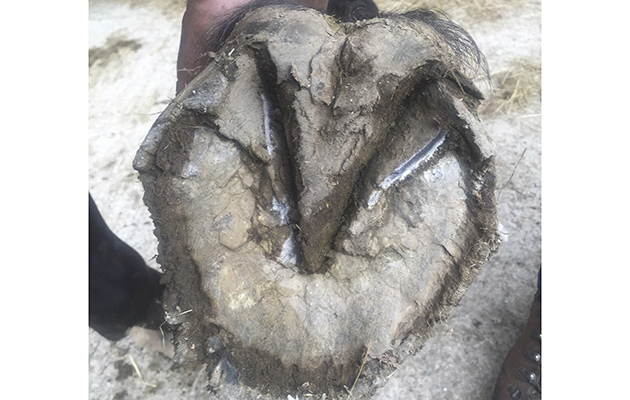Bar the odd chilly snap, most owners have been spared the bitter cold so far this winter. Frozen waterpipes, rock-solid school surfaces and fields buried knee-deep in snow have been few and far between across large parts of Britain, after the warmest and wettest December recorded in UK weather history.
Escaping a really big freeze this time is surely a bonus where winter management is concerned, but how might such a balmy season affect the health of our horses in the long term, as we head towards spring?
The natural cycle
The confused climate of the last few months has produced midwinter temperatures close to those of summer. According to Professor Andy Durham, a specialist in equine internal medicine, some horses may, as a consequence, enter spring carrying surplus weight.
The horse’s metabolism is designed around an annual weight fluctuation, Andy explains, so that abundant summer forage is converted into fat reserves to ensure the horse’s survival in the colder, leaner months.
“It’s completely natural for a horse to put weight on in spring and summer and lose it in autumn and winter,” Andy says. “Hormonal rhythms tie in to make this a very beneficial cycle. At times when less food is available, the hormonal situation switches to break fatty tissue down.”
The danger posed by a mild winter is that these winter fat stores are not used up. A dearth of really cold days, which is often compounded by a modern tendency to over-rug and over-feed our horses, can soon interfere with the body’s natural metabolic mechanism.
“The nature of the horse’s digestive system means that he carries around his own ‘radiator’,” says Andy, referring to hind-gut action that generates a large amount of body heat. “As long as they are fed adequate fibre, horses don’t tend to suffer from the cold as humans do.
“A warm winter environment further encourages weight gain instead of the natural weight loss.
If he’s already a bit overweight, a horse will start the spring at a higher baseline — and unless precautions are taken, he’ll be at a greater risk from obesity-related problems such as laminitis.”
If your horse’s condition is strictly monitored and he is kept at the ideal weight all year round, this cyclicity is not important. Otherwise, Andy advises taking advantage of a horse’s natural tendency to lose any excess pounds in winter.
“Watch the winter diet, especially if temperatures are milder and the horse is not working so hard,” he says. “One benefit of a warm winter is that his coat is probably not as thick as it would typically be, which means that he’ll use a little more energy keeping warm if temperatures do drop.”
Wet-weather nasties

There is a risk of mud fever in such weather conditions
Parasites thrive in a warm, wet winter, so spring pasture management and worm control will be especially important.
Cara Hallowell-Evans MRCVS warns that these conditions can help to seed infective larvae of large and small strongyles across paddocks.
“Mild weather allows eggs to develop into infective larvae over winter,” says Cara, explaining that hatching does not occur in very low temperatures.
“Larvae can develop in temperatures greater than 6°C, although they will take longer to reach the infective stage in these cooler months.
“The risk of infective larval intake and subsequent larval disease for grazing horses is greater,” adds Cara. “Larvae will be dispersed by heavy rainfall, plus wet weather makes pasture management, whether mechanical or manual, extremely difficult.
“Any contamination remains until spring, unless there are significant freezes — the majority of larvae will not survive repeated freeze-thaw.”
A solid freeze is also beneficial in killing off other nasties, including tapeworm eggs and the snail that acts as an intermediate host in the liver fluke cycle.
“High rainfall and warmer temperatures allow the snail host and its habitats to develop over winter, as well as the snail-infective stages,” says Cara. “Liver fluke infection is uncommon in horses and difficult to detect. An antibody test is now available, however, it is possible to monitor liver function and pathology.”
Water, water…

Wet weather plays havoc with feet
With fewer hard frosts, there has been little respite from boggy going and relentless rain.
“Skin that is wetted constantly can become macerated [softened], making it more susceptible to infection,” says Susan Paterson MRCVS, adding that conditions such as mud fever and rain scald should cause no long-term skin damage, if treated correctly.
“With frosts we see a rise in cold-weather moulds, which can trigger allergies such as urticaria [hives], whereas mild weather means mould levels are low. But we can expect an early rise in pollen.”
If there’s no option other than turning a horse out in a waterlogged field, what hope is there for his hooves in six months’ time?
“Physiologically, hooves are better adapted to dry conditions,” says farrier Fraser Youngson AWCF. “Horn quality is affected by prolonged exposure to the wet, becoming saturated and much softer. Studies have shown that horn tubules in the hoof wall decrease in strength by up to three times when wet.
“Horses living in wetter environments are predisposed to bigger, flatter feet due to lack of rigidity,” adds Fraser, explaining that the hoof wall tubules can bend under load if the hooves become soft and spongy.
“The toe typically appears to grow longer and the heels may fold under, which can result in a significantly increased risk of lameness. Hooves are also more prone to bruising of the sole, puncture wounds and infections, both bacterial and fungal.”
Hooves that undergo a repeated cycle of saturation and rapid drying seem to suffer badly, making the immediate task of retaining shoes and keeping the horse sound more problematic. But some of the damage may not be evident until later in the year, when dry conditions exaggerate cracked and brittle horn.
The answer? There’s no magic wand, according to Fraser.
“Topical applications seem to have little effect because they’re quickly rubbed off in the field,” he says. “Good nutrition combined with regular attention from the farrier will improve hoof health in the longer term, but the truth is that the shorter the periods that hooves are exposed to wetness, the better.”
Ref: Horse & Hound; 11 February 2016
